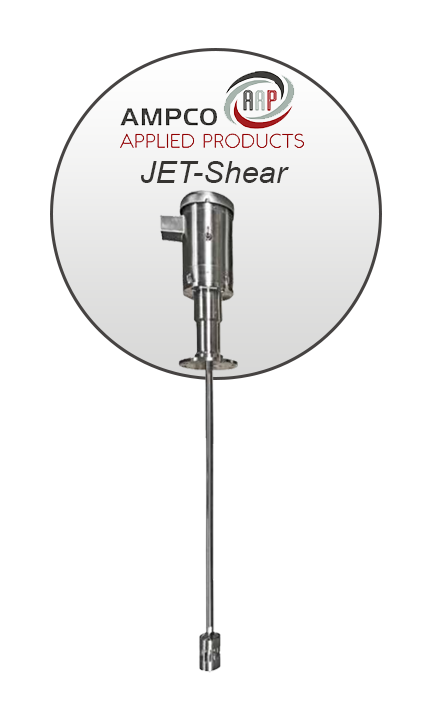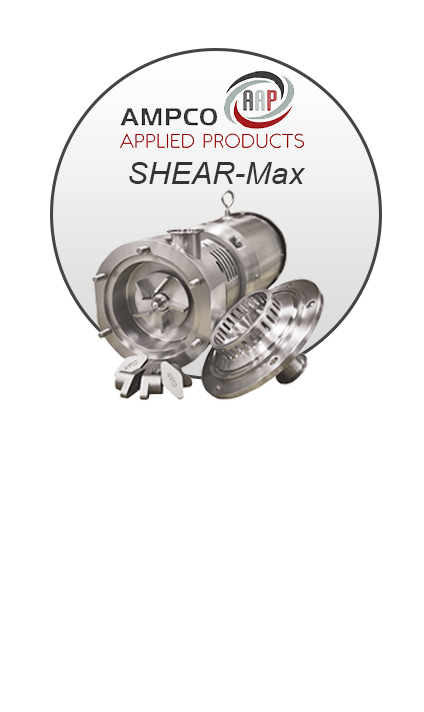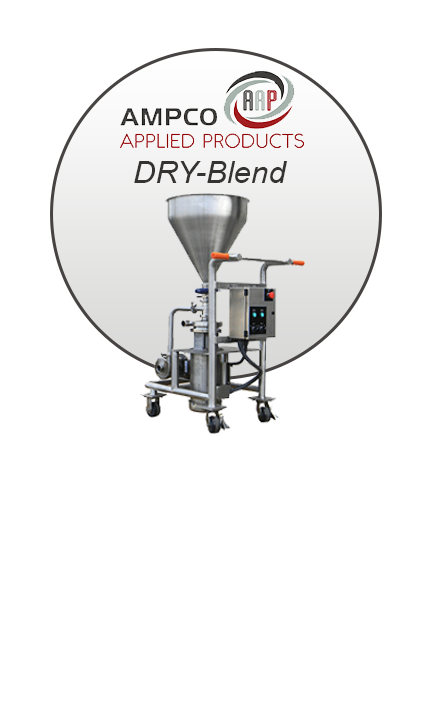Toothpastes, shampoos, sauces, our favorite beverages, and many other materials we use and consume everyday have one thing in common, they were at one time mixed with a sanitary mixer. This is no coincidence, a sanitary mixer not only improves the overall quality of a product, but they are an intricate part of process’ that produce products and materials that make modern life possible. In this article we will discuss materials meeting hygienic standards, construction, types, and applications of sanitary mixers.
What Makes a Mixer Acceptable for Sanitary Applications
Mixers built for sanitary applications meet a combination of industry standards and provide functions for a particular process. For example, a powder mixer needs to be capable of thoroughly mixing dry ingredients together at the proper pace to be able prevent particle breakage and create a consistent mixture. The size of the mixer is determined by the amount of material going through the system or process. Typically, sanitary mixers have CIP and SIP capabilities incorporated in the design that help prevent batch-to-batch contamination. They also have discharge valves, air-purged seals, and other devices to make the mixing process as hygienic as possible. Control systems can be implemented to sanitary mixer process’ to make sure all data is logged, contributing to a quality hygienic process that can be maintained and further honed. Mixers built for sanitary applications are compliant with the most common food and pharmaceutical standards, including FDA, USDA, 3-A Sanitary Standards, ASME, EX, EDEHG, GMP, and EX.
Sanitary Mixer Materials of Construction
An essential element of mixers used for sanitary applications, not to be compromised on, are the materials of construction. Stainless steel alloys are used to fabricate impellers that provide terrific corrosion resistance, which in turn reduces the chance of contamination of the materials being mixed. Smooth surfaces on stainless steel impellers reduce corrosion resistance and are highly in demand in the food and beverage, dairy, pharmaceutical, and biotechnology industries. Since biotech applications require the most pristine sanitary conditions, agitators are typically made from 316L stainless steel welded to the shaft, polished to 20RA, passivated, and electropolished. These agitators can also be covered in Teflon for an extra layer of sanitary protection if necessary.
Common Types of Sanitary Mixers, Blenders and Applications

Agitator Mixers
These powerful mixers are commonly utilized to mix liquids or a liquid and a gas together. Consisting of relatively practical construction (motor, gearbox, shaft, and impeller), agitator mixers are also capable of blending slurries, suspension, and other high viscous media.
The two main categories of impellers on agitator mixers are ones that facilitate axial flow and ones that facilitate radial flow. The main types of axial flow impellers are propeller, pitched blade and hydrofoil. Propeller blades are typically found on portable agitator mixers and notably enable a gentle mixing flow, that effectively blends and keeps product quality high. A pitched blade impeller balances flow and shear to mix materials like additives in tanks. It cuts through thick liquid to make certain there is no phase separation during mixing. A hydrofoil impeller excels in maximizing fluid flow and minimizing shear rate. A hydrofoil impeller is known for its low turbulence inducing, efficient design. A radial flow impeller usually has 4 to 6 blades and is designed to move fluid sideways during rotation. Due to their sideways fluid motion design, radial flow impellers cause a high degree of shear stress and are primarily used for dispersion applications.
One of the most popular types of agitator configurations in the sanitary world is a top entry agitator, which can handle a wide range of viscosities and specific gravities. Other types of agitator configurations include side entry and bottom entry.
Agitators have several sanitary applications including mixing purifying chemicals with source water to develop clean drinking water. Other applications include, Pharmaceutical (vaccine production), food and beverage products (sauces, salad dressings, etc…), and cosmetic and hygiene products (hair gel, makeup, lotions, etc…).

High Shear Inline Mixers
Using powerful blades operating at high speeds, high shear inline mixers are used for emulsification, homogenization, dispersion, particle size reduction, and disintegration of solid and liquid materials. In many high shear inline mixer designs, ingredients are fed into the inlet vertically, are sheared and then discharged horizontally through the outlet. Ingredients are processed in continuous streams unlike batch mixers. High shear inline mixers are responsible for mixing or dispersion of countless liquid and solid compounds. Cosmetics, shampoos, ointments, lotions, toothpaste, syrups, salad dressing and detergents are some of the examples where high shear inline mixers are used to create smooth and consistent products.
Sanitary Static Mixers
Sanitary static mixers are precision machines that mix fluid materials continuously with stationary components. Liquids are usually the fluids mixed when using stationary mixers, but they are also known for mixing gas streams, blending unmixable liquids, or dispersing gas into a liquid. Static mixers are great for several applications including mixing coffee and juice concentrates with water, controlled cooling and mixing of pasta sauces, mixing fruit into yogurt, marbleizing cake batters, carbonizing, and mixing CO2.
Ribbon and Paddle Mixers
Consisting of a horizontal trough and a special ribbon shaped agitator, ribbon mixers are some of the most versatile mixers in the sanitary marketplace. The ribbon agitator consists of a set of inner and outer helical blades. The ribbon rotates continuously moving ingredients radially and laterally to insure thoroughly mixed blends in a relatively short amount of time. Most often, ribbon mixers are for solids mixing, but they can also be used for applications that feature coating a dry particle with a liquid ingredient or particle absorption of a liquid ingredient. Ribbon mixers are often used for protein powders, dry juice mixes, ground coffee beans, nutraceuticals, and a variety of dry food products. A Paddle Mixer is an agitator designed with large paddles that move materials in lateral directions as well as radially. They are typically used for friable materials and small mix batches.

Industrial Dry Blender
An industrial dry blender is designed to mix dry ingredients and assists in creating foods, pharmaceutical drugs and other sanitary products. While dry blenders are primarily used to mix dry ingredients, some wet ingredients maybe added to make mixing easier or to modify components. The main purpose of a dry blender is to make sure a mixture is homogenous or balanced, unlike wet blenders, which break down and combine components. Depending on components, component density and material concentration, mixing time is on average 15 to 30 minutes to fully homogenize. Some common types of dry blenders include a ribbon or paddle blender, a double cone-blender, vertical blender, and a V-Shaped blender. Often easy to maintain and operate, dry blenders are suitable for food, dairy, beverage, pharmaceutical and personal care applications.
Planetary and Spiral Mixers
Planetary and Spiral Mixers are popular sanitary mixers commonly used in commercial kitchens. A planetary mixer consists of a single motor and stationary bowl where the agitator moves around the bowl like a orbiting planet (hence the name) to mix contents. Planetary mixers are ideal for mixing bread dough, cakes, cookie dough, meatballs, sausage, sauces and many other food products. Unlike a planetary mixer where the agitator moves around the bowl, the spiral mixer does the opposite with the actual bowl rotating in both directions, while a spiral hook kneads the dough. Spiral mixers are great for process’ that produce bagels, artisan breads and artisan pizza dough.
Overall, sanitary mixers are an essential tool for ensuring the safety and quality of food and pharmaceutical products. Their hygienic design and efficient mixing capabilities make them a valuable asset for any facility that values cleanliness, quality and to adhere to sanitary standards.
Anderson Process represents outstanding quality sanitary mixer manufacturers, such as Ampco Pumps Company and Sharpe Mixers. Find the right mixer for your application today!
